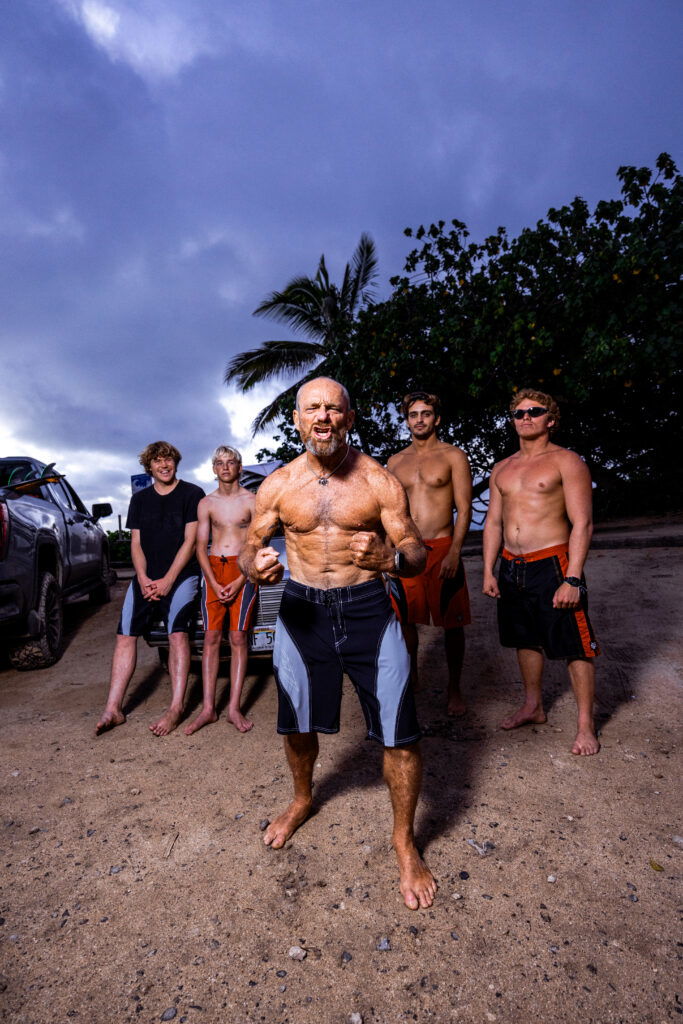Alan Green, Quiksilver Co-Founder, Dies at 77
The low-profile visionary grew the mountain and wave into a billion-dollar empire.
Alan Green, the low-profile visionary behind Quiksilver and a pioneer in surfwear, passed away this week. Born in Melbourne, Australia, in 1947, Green’s life was defined by a passion for surfing and an innate drive to innovate.
In 1969, Green, along with his friends and later Rip Curl co-founders Brian Singer and Doug “Claw” Warbrick, founded a small wetsuit-making brand in the basement of a house in Beale Street behind the Torquay Pub. Green would eventually split with the pair to focus on boardshorts. This venture marked the beginning of a journey that would lead to the creation of Quiksilver, a brand that would become synonymous with surf culture worldwide.
The first product under the Quiksilver label was a pair of sculpted boardshorts — crafted with velcro closures, metal snaps, and a distinctive yoke waist — that forever changed surf apparel. These shorts, designed for performance and comfort, quickly became a staple for surfers globally, aided by Quik’s iconic projects like The Quiksilver Eddie big wave event, the Young Guns film series, and the Quiksilver Crossing.

Green’s wife, Barbara, played a pivotal role in naming the company, inspired by the word “quicksilver” in a novel, which evoked qualities of fluidity, elusiveness, and change — attributes Green associated with surfing. With a cresting wave and snowcapped mountain as its logo, Quiksilver encapsulated the spirit of adventure across snow and sea.
Under Green’s leadership, Quiksilver expanded beyond Australia to the United States in the 1970s, thanks to licensing deals managed by legends like Jeff Hakman and Bob McKnight. By the 1980s, the brand had established a global presence, with distribution across Japan, Europe, and Asia.
Green’s knack for recognizing talent and fostering artistic collaboration — with guys like Simon Buttonshaw and Peter Webb — helped Quiksilver build a global team that included generational talents like Tom Carroll, Lisa Andersen, Kelly Slater, and Stephanie Gilmore.
Kelly Slater himself chimed in today on Instagram saying, “Love you Greeny. You were one of a kind and a great friend and mentor for so many. I’ll miss you forever.”

Despite Quiksilver’s meteoric rise — from its humble garage beginnings to becoming a billion-dollar brand by 2004 — Green remained modest, with a low key media presence. He famously emphasized the collective effort behind the brand, saying, “Quiksilver has never been about one person. It’s always been a group of people thinking globally, acting locally, and guiding the brand through rough consensus.”
Alan Green’s legacy is not only reflected in the iconic products he created and the company he built but also in his lasting impact on surfing culture. Green is survived by his wife, Barbara, two daughters and his son, Fletcher.
Roxy, the name of Alan’s second daughter, and coincidentally, the name of CEO Bob McKnight’s daughter, inspired the creation of Quiksilver’s sister line for women in 1990.
Our thoughts go out to Alan’s friends and family.













